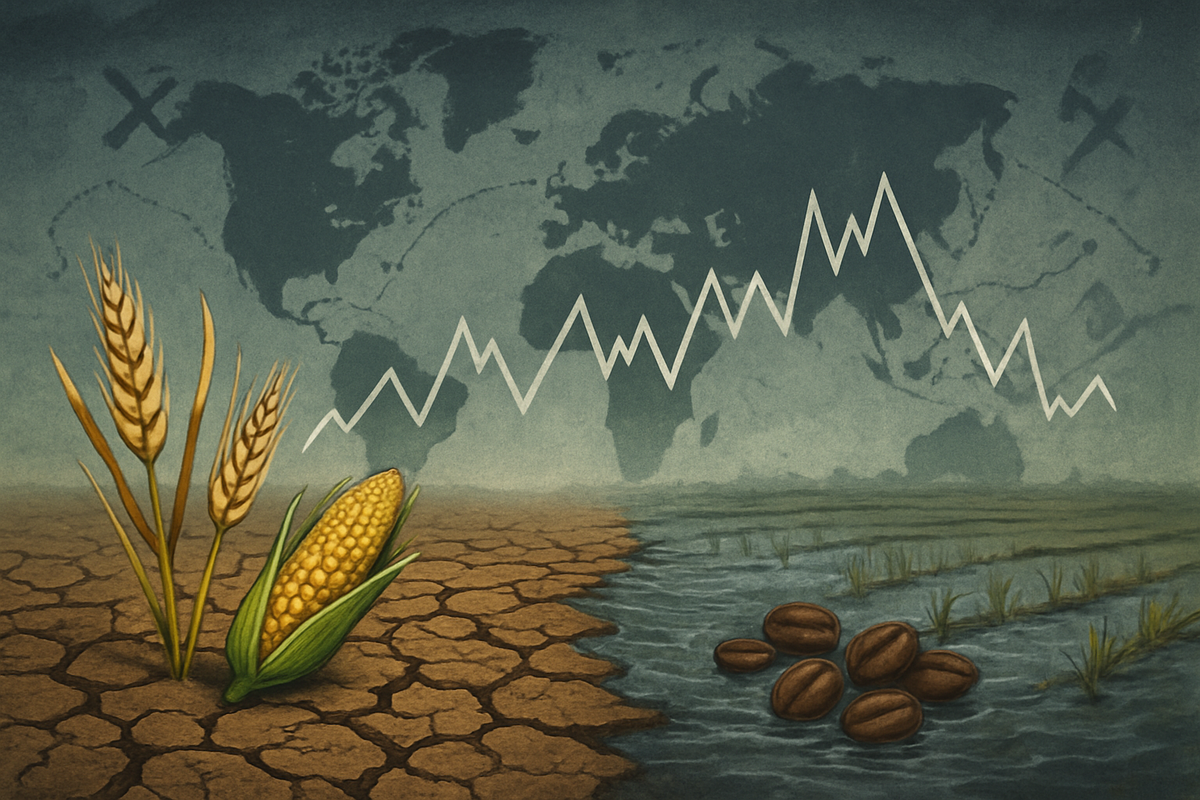Dietary intake, nutritional status, and health outcomes among vegan, vegetarian, and omnivorous Czech families – Nature

Report on the Nutritional and Health Outcomes of Vegan, Vegetarian, and Omnivorous Diets in Czech Families
Introduction: Dietary Choices and Sustainable Development Goals
The increasing adoption of plant-based diets, such as veganism and vegetarianism, is closely linked to global efforts to achieve several Sustainable Development Goals (SDGs). These dietary patterns are often chosen for their perceived benefits to environmental sustainability, aligning with SDG 12 (Responsible Consumption and Production) and SDG 13 (Climate Action). However, for these diets to be truly sustainable, they must also support SDG 3 (Good Health and Well-being) and the nutritional targets of SDG 2 (Zero Hunger). This report summarizes a study that aimed to assess the health and nutritional status of families following vegan, vegetarian, and omnivorous diets, with a particular focus on critical growth periods in children.
Methodology of the Cross-Sectional Study
A comparative cross-sectional study was conducted to evaluate the health impacts of different dietary habits. The methodology involved:
- Participant Cohort: The study included 95 Czech families, comprising:
- 47 vegan families
- 23 vegetarian families
- 25 omnivore families
This cohort consisted of 187 adults and 142 children who had followed their respective diets since birth.
- Data Collection: A comprehensive set of data was collected from all participants, including:
- Clinical examinations
- Fasting blood samples
- 3-day prospective diet records
- Urine samples
- Areas of Analysis: The research focused on comparing key health and nutritional markers across the dietary groups, such as growth characteristics, cardiovascular health indices, bone turnover markers, iodine levels, and overall micronutrient status.
- Statistical Analysis: Robust mixed-effect models were utilized to account for family clustering and adjust for potential confounders.
Key Findings in Relation to Health and Nutrition SDGs
Child Growth and Development (SDG 2 & SDG 3)
- The study found no significant differences in the growth characteristics of children across the three dietary groups (vegan, vegetarian, and omnivore).
- This suggests that well-planned plant-based diets can adequately support normal childhood growth, a key component of achieving SDG 2’s target of ending malnutrition and SDG 3’s goal of ensuring healthy lives.
Cardiometabolic Health (SDG 3)
- Vegan participants, both children and adults, exhibited the most favorable cardiometabolic profiles.
- Specifically, they had lower levels of low-density lipoprotein (LDL) and total cholesterol.
- These findings strongly support SDG 3 (Good Health and Well-being) by demonstrating that vegan diets can contribute to reducing risk factors for non-communicable cardiovascular diseases.
Bone Health and Micronutrient Status (SDG 2 & SDG 3)
- Indices of bone turnover were comparable among all dietary groups, indicating no significant disadvantage for plant-based diets in this area.
- Vegans recorded the highest levels of vitamin D and the lowest levels of urinary phosphate.
- Familial clustering was observed for several vitamins and minerals, including vitamins B12 and D, selenium, zinc, and folate, highlighting the influence of family dietary patterns on nutritional status.
Iodine Status: A Public Health Concern (SDG 2 & SDG 3)
- A significant finding was the lower urinary iodine levels in vegan children.
- While this was not associated with differences in thyroid-stimulating hormone levels in this study, low iodine status is a recognized public health concern.
- This result underscores a potential challenge for individuals on vegan diets in meeting the targets of SDG 2 (ending all forms of malnutrition) and SDG 3 (Good Health and Well-being), indicating a need for targeted nutritional guidance on iodine intake.
Conclusion and Implications for Sustainable Development
The study concludes that dietary habits are a significant predictor of nutritional biomarkers and that plant-based diets can support normal child growth and offer substantial cardiometabolic benefits, aligning with SDG 3. The positive health outcomes suggest that diets supporting environmental goals like SDG 12 and SDG 13 do not have to compromise key health indicators.
However, to fully align with SDG 2, particular attention must be paid to potential micronutrient deficiencies, specifically iodine. The findings highlight the necessity for public health initiatives and dietary guidance to ensure that as populations move towards more sustainable dietary patterns, they are equipped with the knowledge to maintain complete nutritional adequacy.
1. Which SDGs are addressed or connected to the issues highlighted in the article?
The article addresses and connects to the following Sustainable Development Goals (SDGs) by examining the health and nutritional outcomes of different dietary choices, which are often adopted for perceived environmental and health benefits.
-
SDG 2: Zero Hunger
This goal aims to end hunger, achieve food security, improve nutrition, and promote sustainable agriculture. The article directly relates to this by investigating the “overall micronutrient status” and potential “nutrient deficiencies” associated with vegan, vegetarian, and omnivorous diets. It specifically focuses on whether these diets, particularly plant-based ones, provide all essential nutrients for vulnerable groups like children, addressing concerns about malnutrition. The study’s aim to compare “iodine, and overall micronutrient status among families” is central to the nutritional aspect of SDG 2.
-
SDG 3: Good Health and Well-being
This goal seeks to ensure healthy lives and promote well-being for all at all ages. The article’s core focus is on comparing the health outcomes of different diets. It explicitly examines “growth, cardiovascular health, bone turnover,” and other health markers. The finding that “Vegan children have the best cardiometabolic indices (low-density lipoprotein and total cholesterol)” directly speaks to the prevention of non-communicable diseases, a key component of SDG 3.
-
SDG 12: Responsible Consumption and Production
This goal is about promoting sustainable consumption and production patterns. The article’s background states that “Vegan diets are gaining popularity… because of their perceived environmental and health benefits.” This links the dietary choices under study to a broader movement towards sustainable lifestyles. By providing scientific evidence on the health impacts of these diets, the study informs consumers and helps ensure that choices made for environmental reasons are also healthy and sustainable from a human well-being perspective.
2. What specific targets under those SDGs can be identified based on the article’s content?
Based on the article’s focus on nutrition and health outcomes, the following specific SDG targets can be identified:
-
Target 2.2: End all forms of malnutrition
This target aims to “end all forms of malnutrition, including… stunting and wasting in children under 5 years of age, and address the nutritional needs of… children.” The study directly addresses this by investigating whether vegan and vegetarian diets can lead to “potential nutrient deficiencies, particularly during critical growth periods.” It assesses “children’s growth characteristics” and finds “no significant differences,” suggesting these diets can support normal growth. However, it also identifies a risk of malnutrition through its finding that “vegan children show lower urinary iodine,” highlighting a specific nutritional need that requires attention.
-
Target 3.4: Reduce premature mortality from non-communicable diseases
This target aims to “reduce by one third premature mortality from non-communicable diseases through prevention and treatment.” The article contributes to the prevention aspect by evaluating risk factors for cardiovascular disease. It measures “cardiometabolic indices” such as “low-density lipoprotein and total cholesterol.” The conclusion that vegans have “better cardiometabolic profiles” provides evidence that plant-based diets can be a preventative strategy against cardiovascular diseases, which are a major category of non-communicable diseases.
-
Target 12.8: Promote universal understanding of sustainable lifestyles
This target is to “ensure that people everywhere have the relevant information and awareness for sustainable development and lifestyles.” The article contributes directly to this by generating and disseminating scientific information about the health implications of diets often chosen for sustainability reasons. The study’s conclusion that “plant-based diets supported normal child growth and provided cardiometabolic benefits, although iodine intake may require attention” is precisely the kind of nuanced, evidence-based information that allows people to make informed decisions about adopting sustainable lifestyles without compromising their health.
3. Are there any indicators mentioned or implied in the article that can be used to measure progress towards the identified targets?
Yes, the article mentions and implies several specific indicators that can be used to measure progress towards the identified targets, even if they are not the official SDG indicators. These are the direct measurements used in the study to assess health and nutritional status.
-
Indicators for Target 2.2 (End malnutrition)
- Micronutrient Status: The article explicitly measures “overall micronutrient status,” including levels of “vitamin D,” “vitamins B12,” “selenium, zinc, iodine, and folate.” These serve as direct indicators of nutritional adequacy and can be used to track the prevalence of specific deficiencies in different population groups.
- Iodine Levels: The measurement of “urinary iodine” is a specific indicator used to assess iodine status. The finding that “vegan children show lower urinary iodine” is a quantifiable measure of a potential nutritional gap.
- Children’s Growth Characteristics: The study’s assessment of growth in children is a proxy indicator for stunting and wasting. The finding of “no significant differences in children’s growth characteristics” indicates that, on this measure, malnutrition is not occurring in the studied groups.
-
Indicators for Target 3.4 (Reduce NCDs)
- Cardiometabolic Indices: The article uses “cardiometabolic indices” as a key indicator. This includes specific biomarkers like “low-density lipoprotein and total cholesterol.” These are established risk factors for cardiovascular disease, and tracking their levels in the population can measure progress in NCD prevention.
- Bone Turnover Indices: The study’s observation of “comparable indices of bone turnover among groups” is an indicator of bone health, which is relevant to preventing diseases like osteoporosis later in life.
-
Indicators for Target 12.8 (Promote understanding of sustainable lifestyles)
- Availability of Scientific Data on Health Outcomes of Diets: The publication of this study itself acts as an indicator. The article makes its data and code available in public repositories (“Zenodo repository” and “GitHub repository”), which is a tangible measure of providing the “relevant information” called for in the target. This increases the body of knowledge available to the public and policymakers.
4. Table of SDGs, Targets, and Indicators
| SDGs | Targets | Indicators (Identified in the Article) |
|---|---|---|
| SDG 2: Zero Hunger | Target 2.2: End all forms of malnutrition. |
|
| SDG 3: Good Health and Well-being | Target 3.4: Reduce premature mortality from non-communicable diseases (NCDs). |
|
| SDG 12: Responsible Consumption and Production | Target 12.8: Ensure people have relevant information for sustainable lifestyles. |
|
Source: nature.com
What is Your Reaction?
 Like
0
Like
0
 Dislike
0
Dislike
0
 Love
0
Love
0
 Funny
0
Funny
0
 Angry
0
Angry
0
 Sad
0
Sad
0
 Wow
0
Wow
0




















































.jpg.webp?itok=0ZsAnae9#)

























